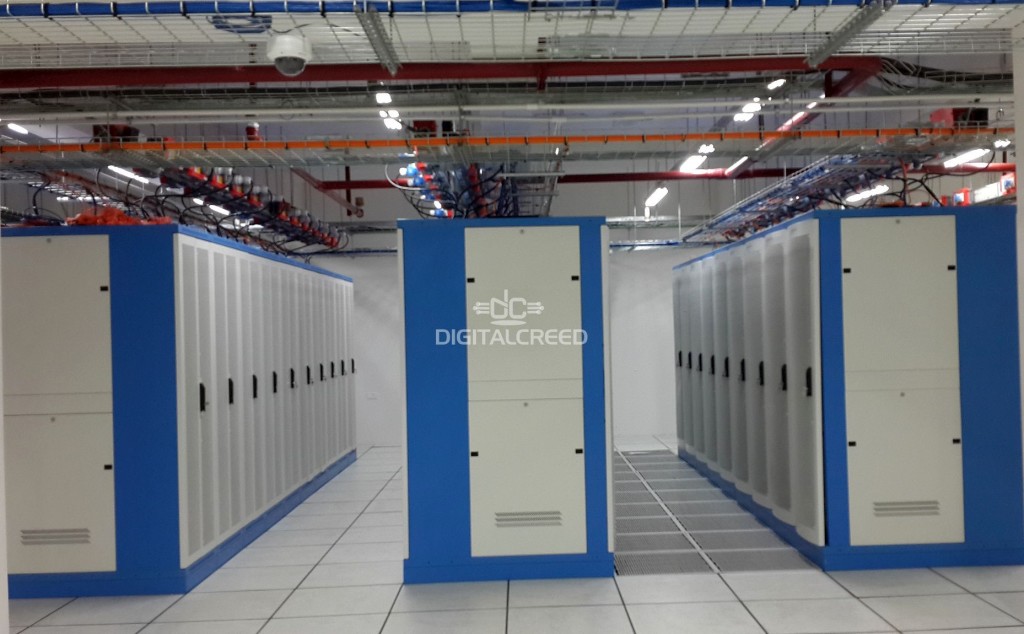Four years ago, I was writing a cover story on data centers for InformationWeek magazine. The research included visits to five data centers around the country. I would spend a full day at each data center, touring the facilities and speaking to data center specialists and CEOs. And I was highly impressed with the world-class infrastructure and, of course, the mammoth investments pumped into these data centers.
Today, I do not hear about half of those data centers. They have either been acquired and rebranded or are looking for buyers. Some are struggling to survive.
No names, please!
Well, last month, I visited three data centers: NxtGen (Bangalore), Netmagic Solutions (Mumbai) and ESDS (Navi Mumbai). Did the tours again and spoke to the data center heads. Do read the 3 interviews in the Top Stories section on this website.
I was told that there is a huge demand for data center services in India. I wondered what is driving demand this time. Four years ago I was told that there was demand from the telecom and banking sectors.
Sunil Gupta, Executive Director & President, Netmagic Solutions is optimistic about the data center industry in India and he thinks it will see good days for at least the next 10 years. He justifies this optimism well, alluding to India as a bright spot in the global economic scenario and the demand from MNCs, startups, SMEs, e-commerce, and certain industry verticals. You can read his interview here.
Despite the market optimism, why do some data centers struggle to sustain themselves? And what does it take for a data center to succeed? What should be on your shopping list if you are out looking for someone to host your IT infrastructure?
The answer to these questions is summarized in the following four points:
1. Look for someone with deep pockets
It costs a ton of seed capital to set up a data center. And the cost of operations over the years will be more than double the initial investment. After all, hardware gets obsolete every 4 – 5 years. And don’t forget that you are buying TWO of each component because you have to plan for N+1 redundancy. If one component fails, its redundant part takes over. Data centers have to continuously upgrade bandwidth. There are huge running costs for fuel (diesel), electricity, water (for cooling) and manpower. I know a data center in India that spends Rs 1 core only on the special fire retardant gas in the server rooms!
So ask who has invested in the data center. It will take some time to acquire customers. How long are they going to invest?
2. Look for experienced people
There are many things that could go wrong in a data center. But only a set of highly experienced people would know about these failures, and would have taken counteraction. The best analogy is flying. You’d feel safer in the hands of a very experienced crew. In the case of pilots, the amount of flying hours logged for a particular type of aircraft is a critical metric. How many hours have they spent training in a simulator, experiencing various types of malfunctions and staged disasters?
You do not want to leave your business data and applications in the hands of inexperienced people. So ask about the collective experience of the team. Who are the people managing the day-to-day operations? Check their credentials and certifications. Better, speak to them.
3. Look for innovation, flexibility, and elasticity
You’d want to keep a close eye on TCO and running costs. As your business expands, you would need to top up on infrastructure and deploy additional services. But then, you would not need all that firepower throughout the year.
Are you fully and optimally utilizing what you paid for?
ESDS offers a cost optimization feature called ‘Pay-per-consume’. As the name suggest, you pay only for those resources that you actually consume. Read more about it here. Ths feature is going to save CIOs lots of money, for sure!
Cloud bursting is another feature. When your business peaks, there is no time to follow traditional processes for acquiring additional resources. Your website/server will crash if you wait! The cloud bursting feature automatically scales your infrastructure from on-premise to the cloud. That means additional virtual machines and other resources are deployed from the service provider’s cloud. And when operations normalize again, you automatically surrender those resources and scale down. So in a way, you ‘borrow’ resources when needed, and only pay for it on the basis of actual usage.
NxtGen calls this concept of elasticity as ‘The Infinite Data Center’. And you can read more about it here.
Look for innovation of this kind in a data center. For it can not only save you money but also ensure maximum uptime. What’s the track record on outages and uptime?
4. Certifications and standards
International certifications and adherence to standards ensure quality in processes and best practices. Look for certifications from esteemed and international institutions such as the Uptime Institute. It has a tiered classification and the higher the tier the better. Tier III is the norm and Tier IV is rare in India. Some data centers talk about Tier III +.
Also, look at the certifications acquired by the data center specialists.
Ask about the PUE rating of the data center.
The DR (disaster recovery) and BC (Business Continuity) features should be scrutinized.
In conclusion. let me state that this is not an exhaustive checklist. Do watch the videos and read all the stories on this site to get a complete picture. Follow the links below:
‘Data center industry will see good days for next 10 years’
The secret honey that’s attracting CIOs to ESDS Cloud & datacenter
How NxtGen makes its datacenter ‘Infinite’

